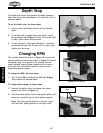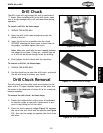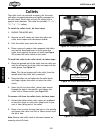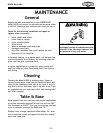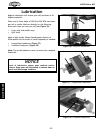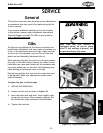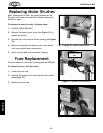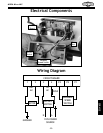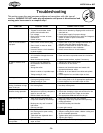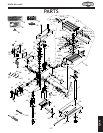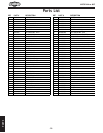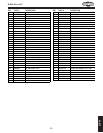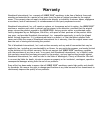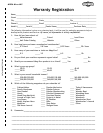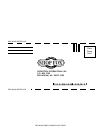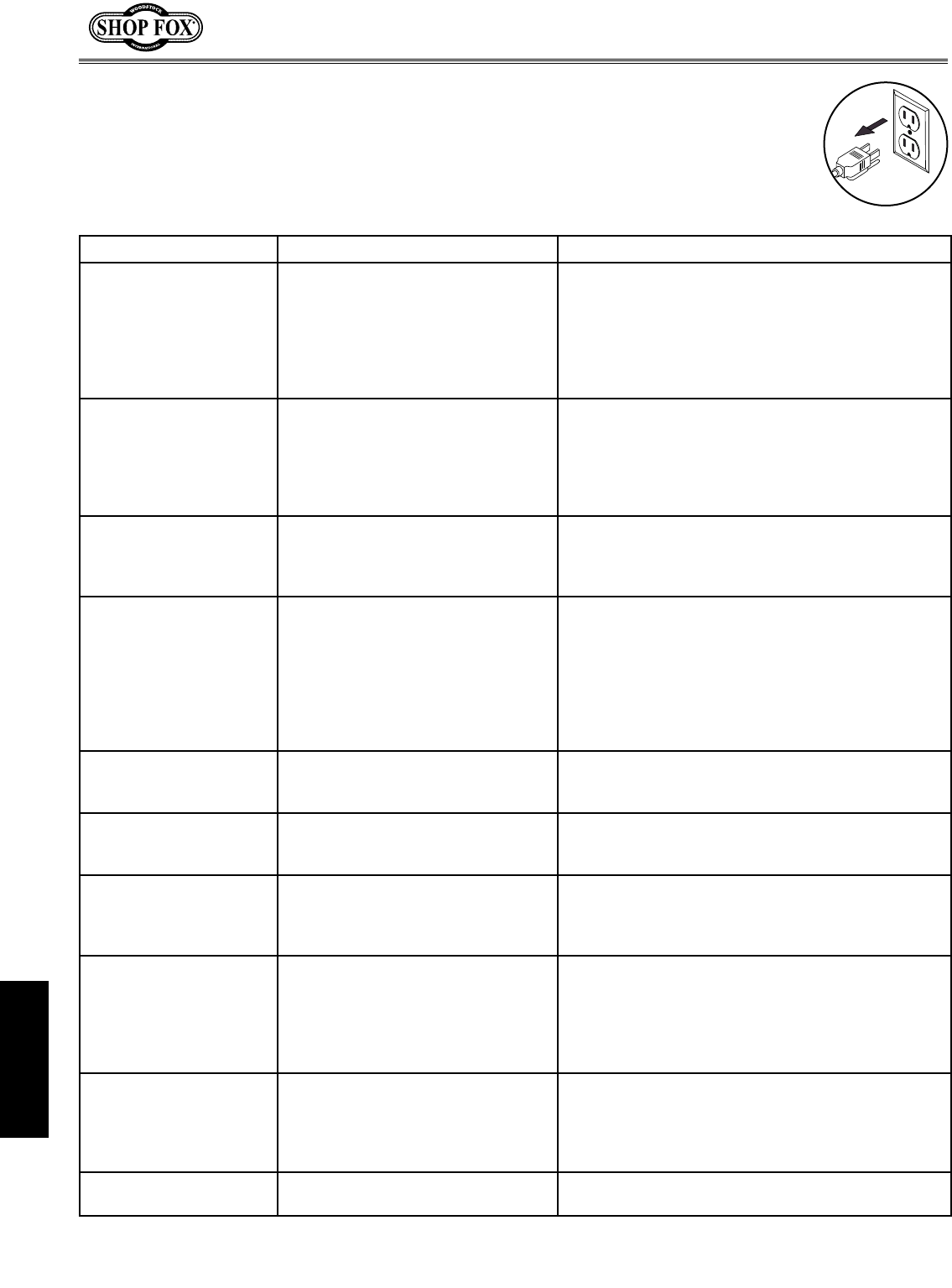
-26-
M1036 Micro Mill
SERVICE
Troubleshooting
This section covers the most common problems and corrections with this type of
machine. WARNING! DO NOT make any adjustments until power is disconnected and
moving parts have come to a complete stop
!
SYMPTOM POSSIBLE CAUSE CORRECTIVE ACTION
Motor will not start. 1. Blown system fuse.
2. Tripped circuit breaker inside
power source breaker box.
3. Low voltage.
4. Open circuit in motor or loose
connections.
5. Switch at fault.
1. Replace fuse.
2. Reset circuit breaker by flipping switch on then off
then back on.
3. Check power supply for proper voltage.
4. Inspect all lead connections on motor and magnetic
switch for loose or open connections.
5. Replace switch.
Fuses or circuit breakers
trip open
.
1. Short circuit in line cord or plug.
2. Short circuit in motor or loose
connections.
3. Incorrect fuses or circuit breakers
in power supply.
1. Inspect cord or plug for damaged insulation and
shorted wires and replace extension cord.
2. Inspect all connections on motor for loose or
shorted terminals or worn insulation.
3. Install correct fuses or circuit breakers.
Motor overheats. 1. Motor overloaded.
2. Air circulation through the motor
restricted.
3. Motor brushes are wearing.
1. Reduce load on motor.
2. Clean out motor to provide normal air circulation.
3. Inspect motor brushes, replace if necessary.
Bit slips in collet or drill
chuck.
1.
Chuck is not fully tightened.
2. Bit installed in drill chuck off
center.
3. Wrong size collet.
4. Debris in collet or in spindle taper.
5.
Taking too big of a cut.
1. Tighten the collet or drill chuck.
2. Re-install bit in drill chuck.
3. Measure tool shank diameter and match with
appropriate diameter collet.
4. Remove all oil and debris from collet and spindle
taper.
5. Lessen depth of cut and allow chips to clear.
Breaking tools or cutters. 1. RPM and or feed rate is too fast.
2. Cutting tool getting too hot.
3.
Taking too big of a cut.
1. Reduce
RPM and feed rates.
2. Use cutting fluid or oil for appropriate application.
3.
Lessen depth of cut and allow chips to clear.
Machine is loud when
cutting. Overheats or bogs
down in the cut.
1. Excessive depth of cut.
2. Dull cutting tools.
1. Decrease depth of cut.
2. Use sharp cutting tools.
Workpiece vibrates or
chatters during operation.
1. Table locks not tight.
2. Workpiece not securely clamped to
table or into mill vise.
3.
RPM and feed rate too high.
1. Tighten down table locks.
2. Check that clamping is tight and sufficient for the
job. Make sure mill vise is tight to the table.
3.
Use appropriate RPM and feed for the job.
Table hard to move. 1. Table locks are tightened down.
2.
Chips have loaded up on bedways.
3. Bedways are dry and in need of
lubrication.
4.
Gibs are too tight.
1.
Make sure table locks are fully released.
2. Frequently clean away chips that load up during
milling operations.
3. Lubricate bedways and handles.
4.
Loosen gib screw(s).
Bad surface finish. 1. Wrong RPM or feed rate.
2. Dull cutting tool or poor cutting
tool selection.
3. Table locks not tightened down.
4. Gibs are loose.
1. Adjust for appropriate RPM and feed rate.
2. Sharpen cutting tool or select a better cutting tool
for the intended operation.
3. Tighten table locks to maintain rigidity.
4. Tighten gibs slightly.
Difficulty removing collet
from spindle.
1. Debris in spindle taper or collet
taper or both.
1. Keep all taper surfaces spotlessly clean.



